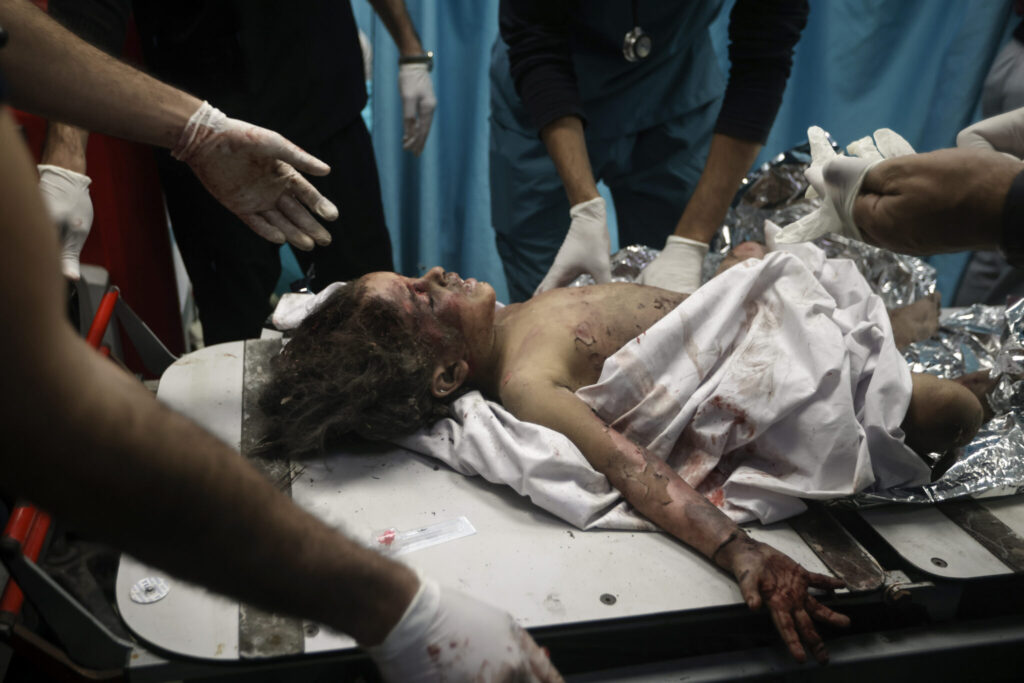Thousands of Israeli soldiers are being shifted out of the Gaza Strip, the military said Monday, in the first significant drawdown of troops since the war began as forces continued to bear down on the main city in the southern half of the enclave.
Quick Read
- Israeli Troop Withdrawal from Northern Gaza: The Israeli military announced the withdrawal of five brigades, equating to several thousand troops, from the Gaza Strip. This movement could indicate a scaling back of fighting in some areas, particularly in northern Gaza.
- Continued Conflict in Southern Gaza: Despite the troop withdrawal in the north, intense fighting continues in southern Gaza, especially in Khan Younis and central regions. Israel remains committed to its war objectives, including dismantling Hamas.
- Statement from Israeli Military: The Israeli army stated that the troops being withdrawn are for training and rest, but did not explicitly confirm if this signals a new phase in the war.
- Background of the Conflict: The war began after Hamas’ attack on southern Israel on October 7, which led to 1,200 deaths and the capture of about 240 hostages. Israel’s response has been a comprehensive offensive resulting in over 21,900 deaths in Gaza, with a significant civilian toll.
- High Civilian Casualties: The high number of civilian casualties is attributed by Israel to Hamas embedding within residential areas. The Health Ministry in Gaza reports that two-thirds of the deaths are women and children.
- Displacement in Gaza: Approximately 85% of Gaza’s 2.3 million residents have been displaced due to the conflict.
- Ongoing Battles: Khan Younis continues to experience airstrikes and shelling, with reports of casualties and fatalities. Central Gaza also faces significant combat activities.
- Hamas Rocket Attacks: Hamas launched a large barrage of rockets towards Israel, including Tel Aviv, during New Year’s Eve.
- International Pressure for Cease-fire: Despite international calls for a long-term cease-fire, Israel maintains that a prolonged offensive is necessary to dismantle Hamas’ capabilities and infrastructure.
- Israeli Military Losses: The Israeli military has reported the loss of 172 soldiers since the ground operation began, with some casualties due to friendly fire and equipment malfunctions.
The Associated Press has the story:
Israel is pulling thousands of troops from Gaza as combat focuses on enclave’s main southern city
Newslooks- TEL AVIV, Israel (AP)
Thousands of Israeli soldiers are being shifted out of the Gaza Strip, the military said Monday, in the first significant drawdown of troops since the war began as forces continued to bear down on the main city in the southern half of the enclave.
The troop movement could signal that fighting is being scaled back in some areas of Gaza, particularly in the northern half where the military has said it is close to assuming operational control. Israel has been under pressure from its chief ally, the United States, to begin to switch to lower-intensity fighting.
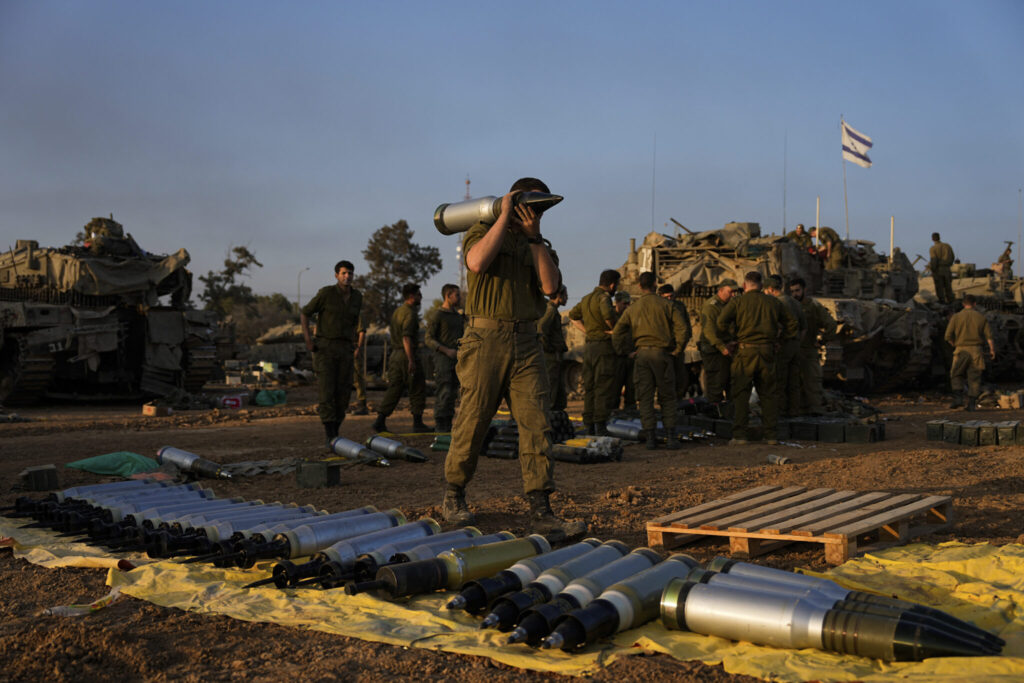
Word of the drawdown came ahead of a visit by Secretary of State Antony Blinken to the region and after the Biden administration bypassed Congress for the second time this month to approve an emergency weapons sale to Israel.
But fierce fighting continued in other areas of Gaza, especially the southern city Khan Younis and central areas of the territory. Israel has pledged to charge ahead until its war aims have been achieved, including dismantling Hamas, which has ruled Gaza for 16 years.
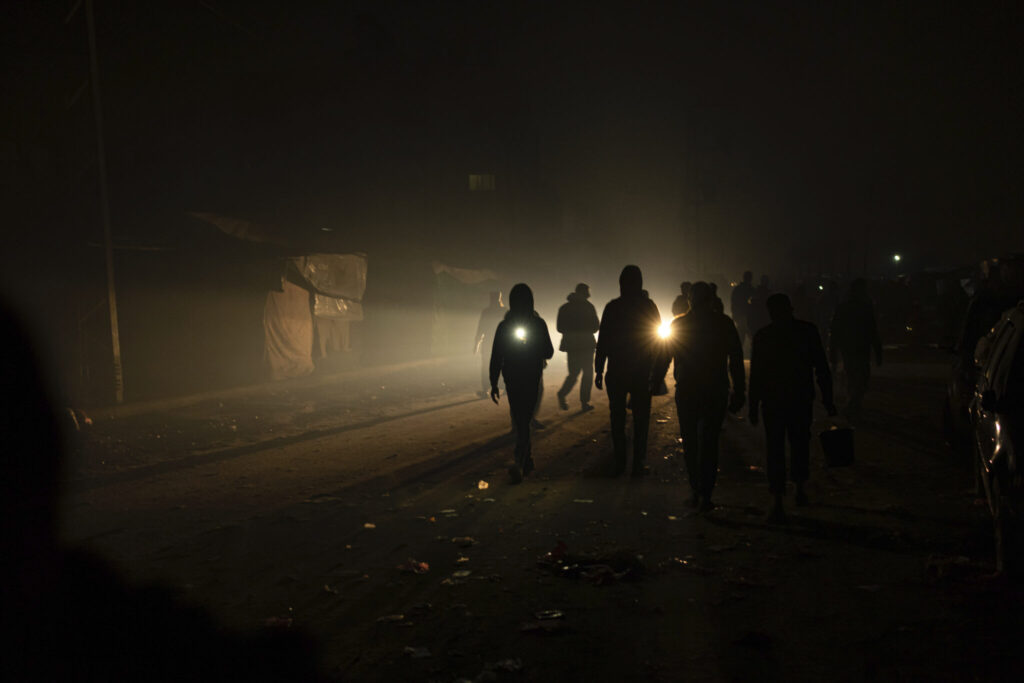
The military said in a statement Monday that five brigades, or several thousand troops, were being taken out of Gaza in the coming weeks for training and rest.
In a briefing Sunday that first announced the troop withdrawal without specifying how many forces were leaving, army spokesman Rear Adm. Daniel Hagari did not say whether the decision meant Israel was launching a new phase of the war.
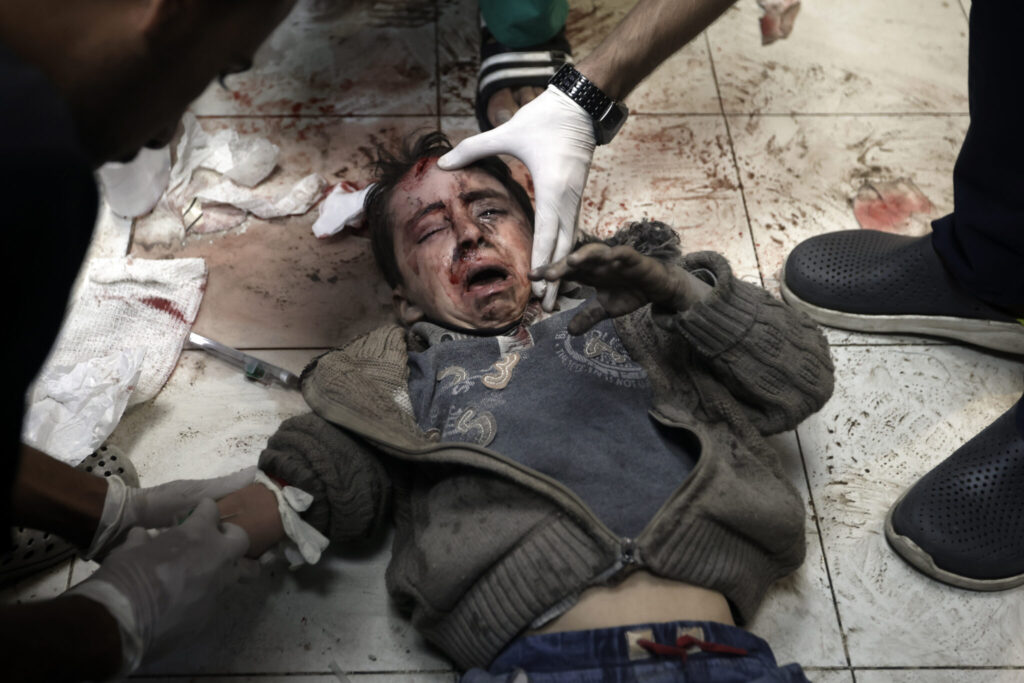
“The objectives of the war require prolonged fighting, and we are preparing accordingly,” he said.
Israel has vowed to crush Hamas’ military and governing capabilities in its war, which was sparked by the militant group’s Oct. 7 attack on southern Israel, which killed 1,200 people. Roughly 240 people were taken hostage.
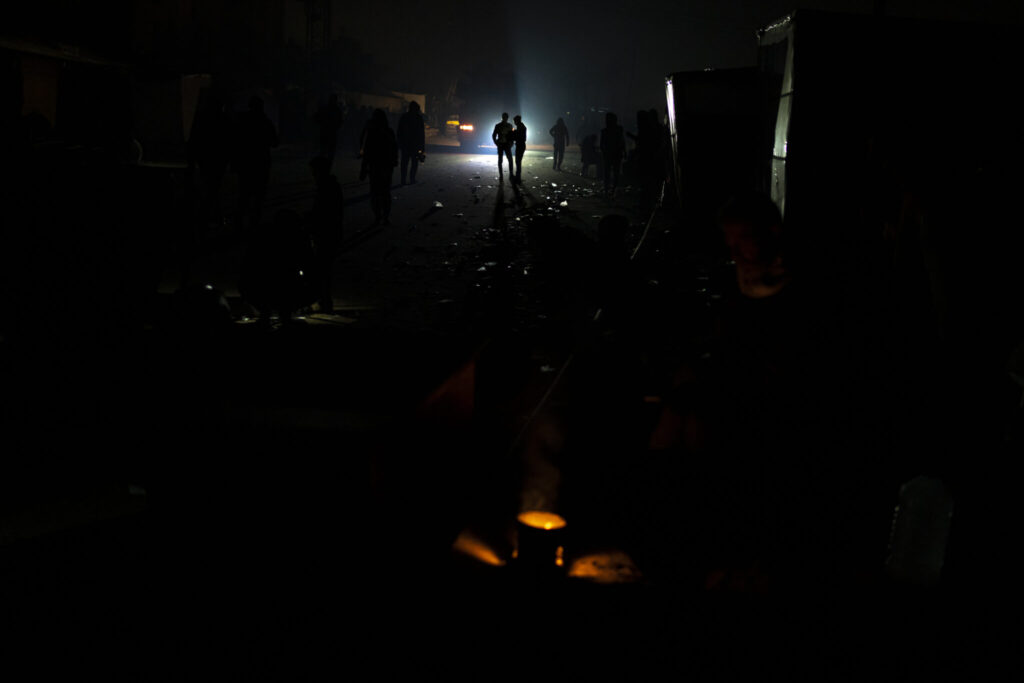
Israel responded with a blistering air, ground and sea offensive that has killed more than 21,900 people in Gaza, two-thirds of them women and children, according to the Health Ministry in Gaza, which does not differentiate between civilians and combatants in its count.
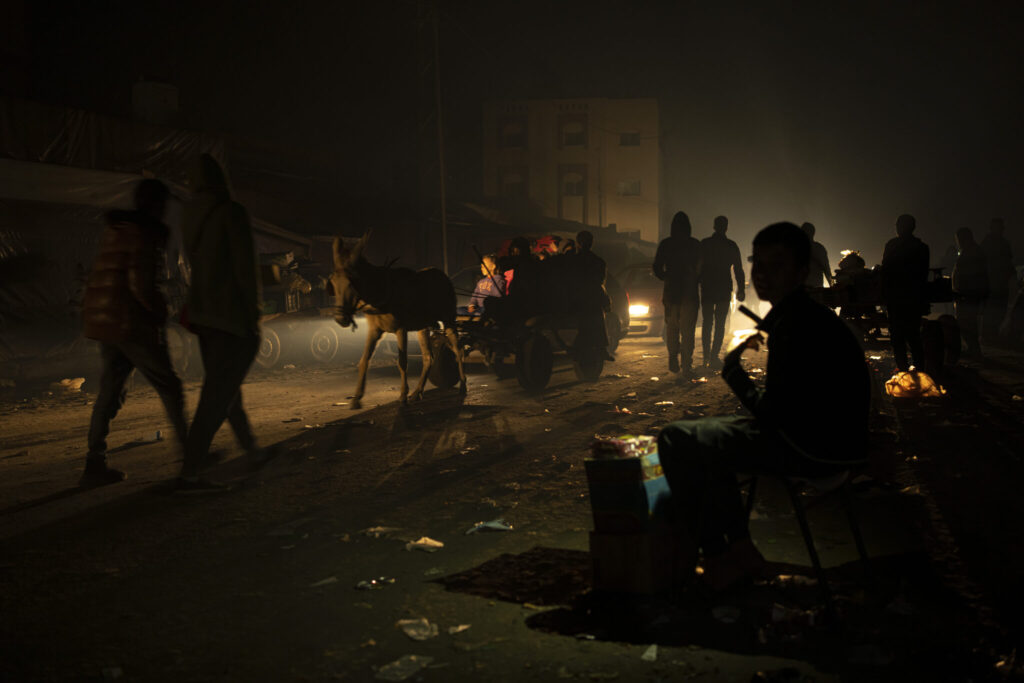
Israel says more than 8,000 militants have been killed, without providing evidence. It blames Hamas for the high civilian death toll, saying the militants embed within residential areas, including schools and hospitals.
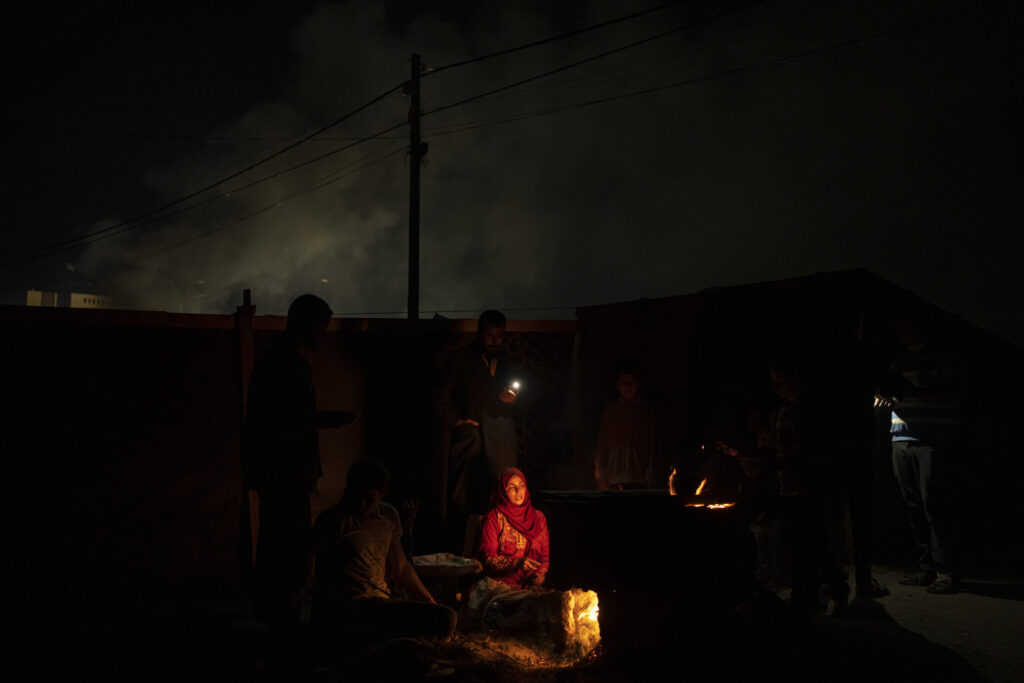
The war has displaced some 85% of Gaza’s 2.3 million residents, sending swells of people seeking shelter in Israeli-designated safe areas that the military has nevertheless bombed. Palestinians are left with a sense that nowhere is safe in the tiny enclave.
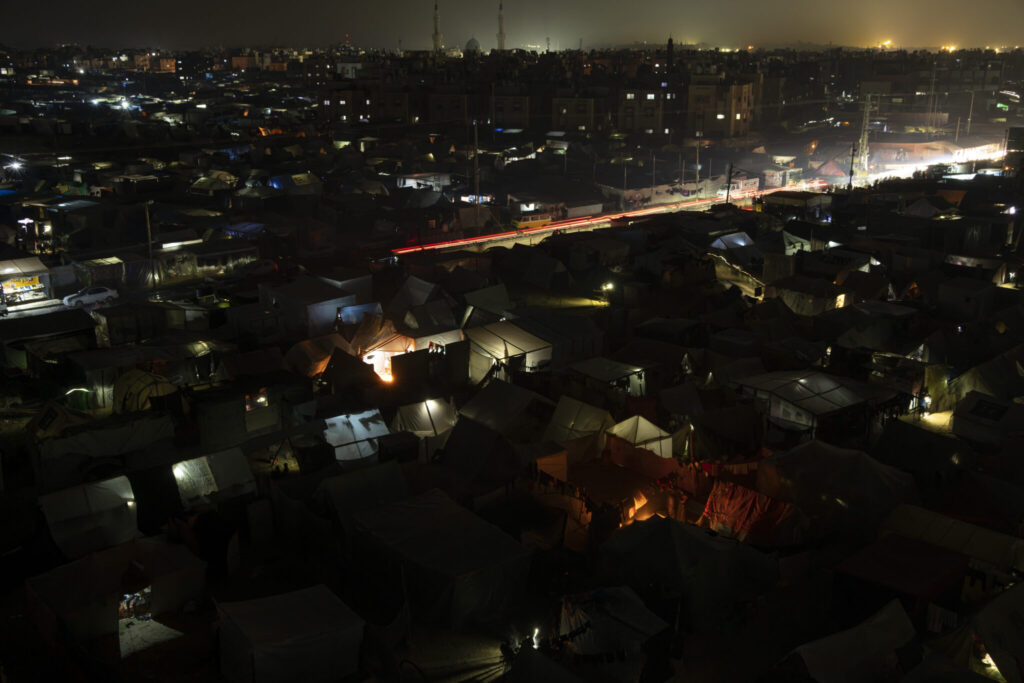
BATTLES IN THE SOUTH
In Khan Younis, where Israel is believed to have thousands of troops, residents reported airstrikes and shelling in the west and center of the city. The military and the militant group Islamic Jihad reported clashes in the area.
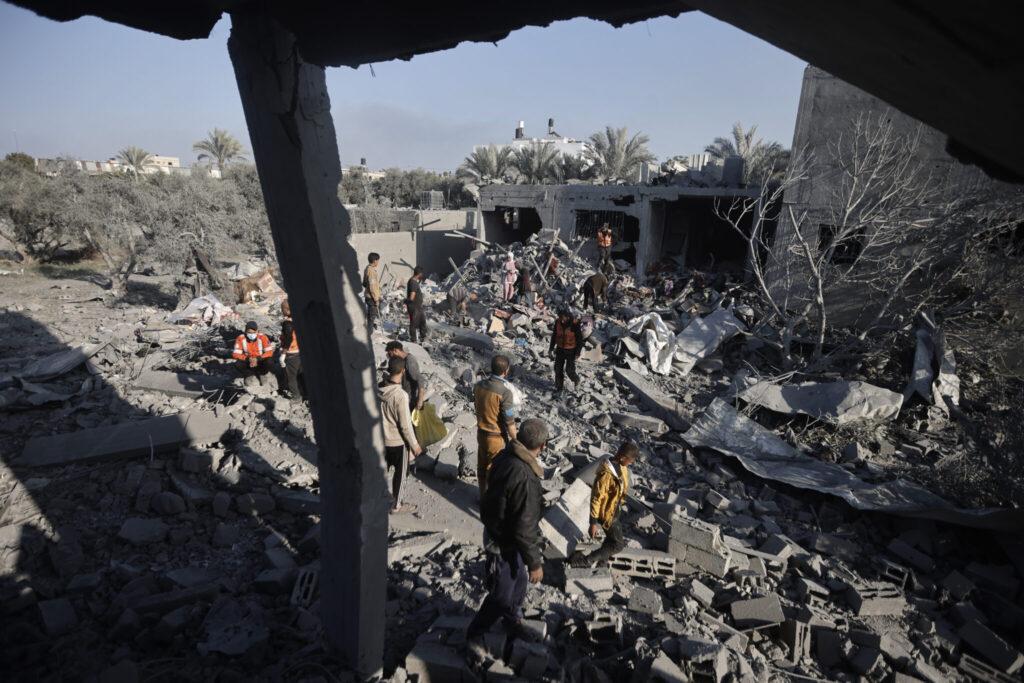
The Palestinian Red Crescent said on X, formerly Twitter, that it transported several dead and injured following a strike late Sunday in the Beach Street in Khan Younis. It posted nighttime footage showing medics carrying casualties to ambulances.
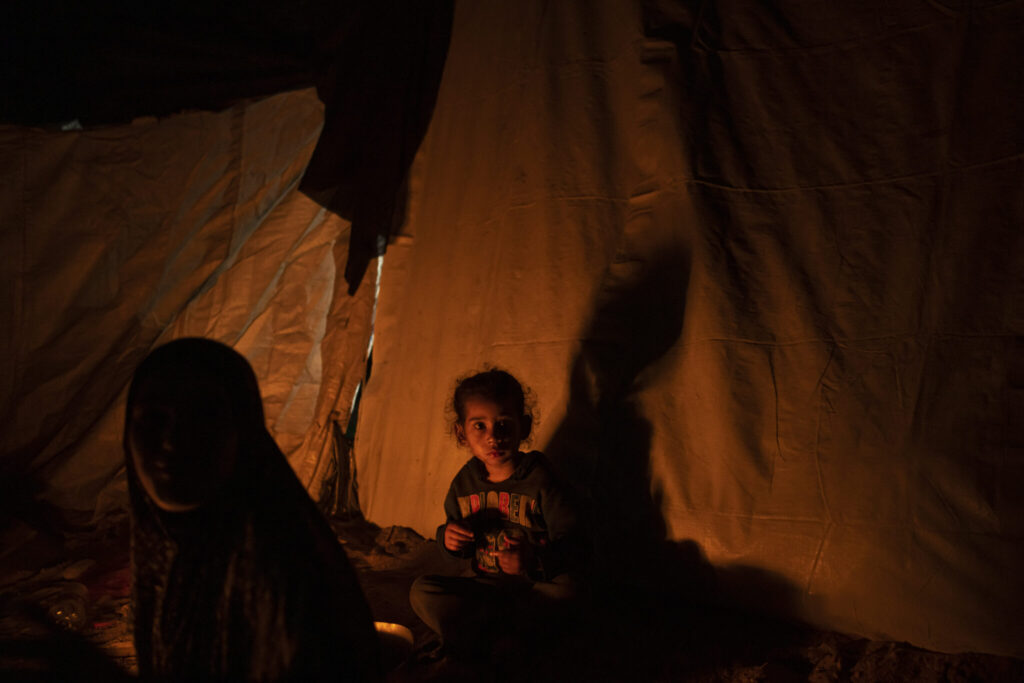
Combat was also reported in urban refugee camps in central Gaza, where Israel expanded its offensive last week.
“It’s our routine: bombings, massacres and martyrs,” said Saeed Moustafa, a Palestinian from the Nuseirat camp. He said he could hear sporadic explosions and gunfire in Nuseirat and in the nearby Bureij and Maghazi camps.
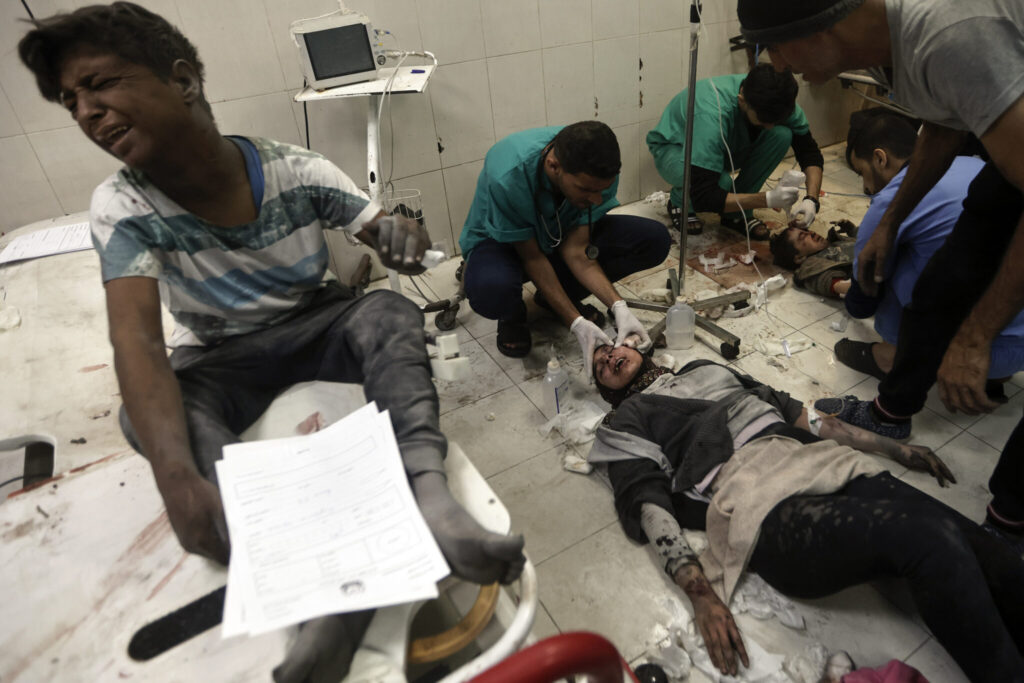
“Just as we speak, there is a big explosion not far from my home,” he said in a phone call Monday morning.
Gaza’s Health Ministry said Monday that 156 people were killed in the past day.
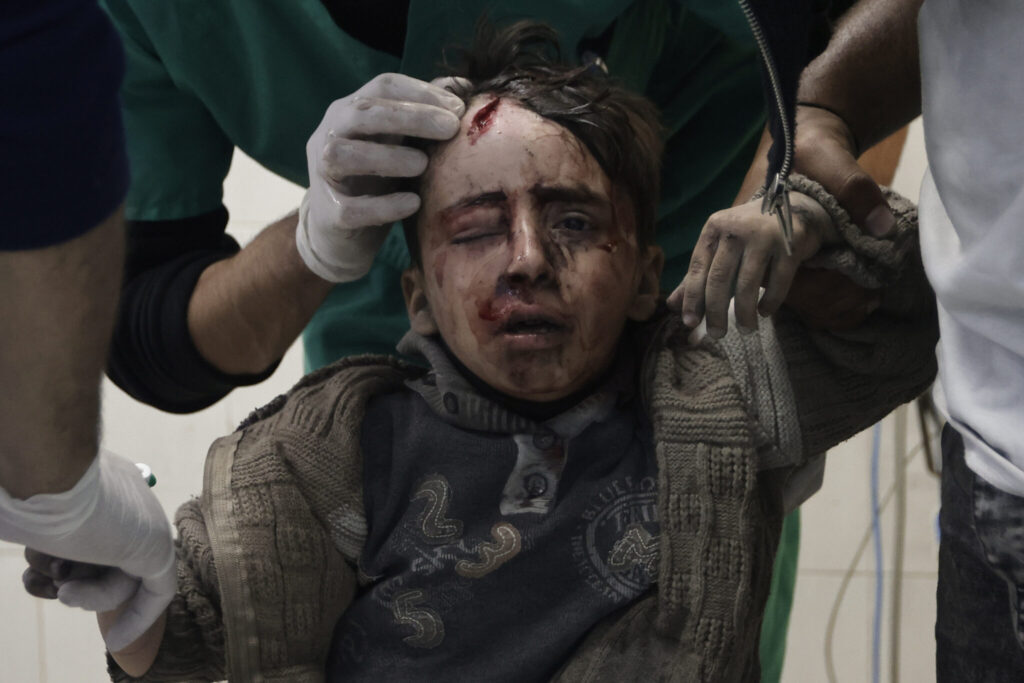
The Israeli military meanwhile said an airstrike killed Adel Mismah, a regional commander of Hamas’ elite Nukhba forces, in the central city of Deir al-Balah.
Hamas fired a large barrage of rockets toward Israel, including at its commercial hub Tel Aviv, as the clock struck midnight on New Year’s Eve.‘A
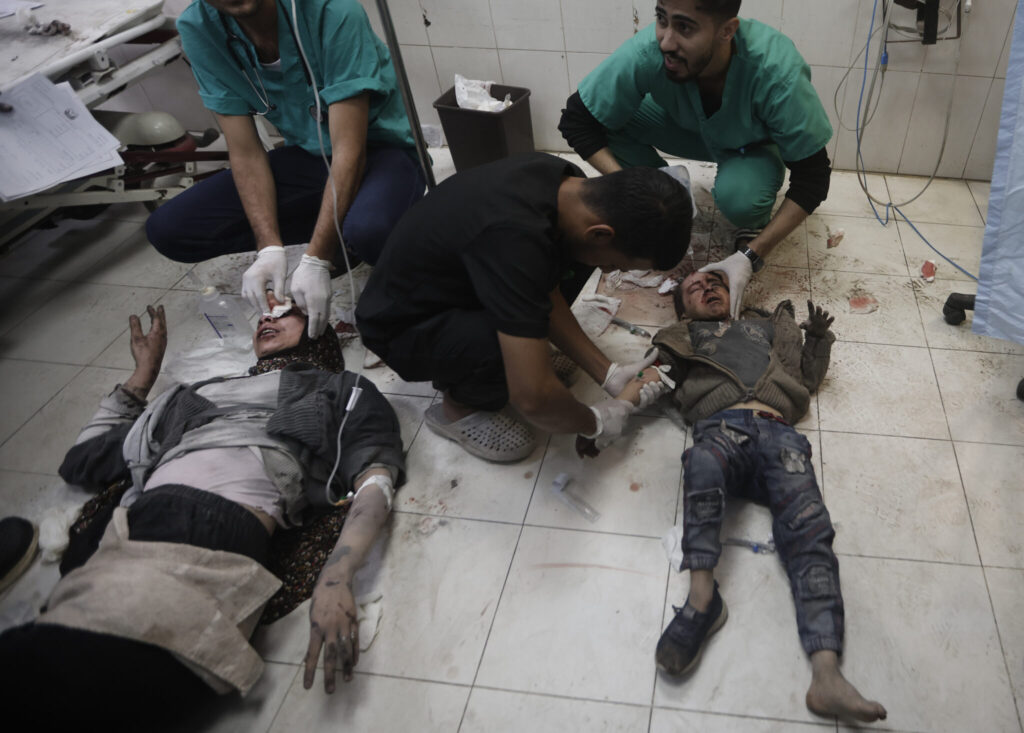
DIFFERENT MODE OF OPERATION’
Israel has said the war will last for months. It has argued that it needs time to clear Gaza of militants’ weapons and infrastructure and to prevent Hamas from being able to stage more attacks. Israel has resisted international calls for a long-term cease-fire, saying doing so would amount to a victory for Hamas.
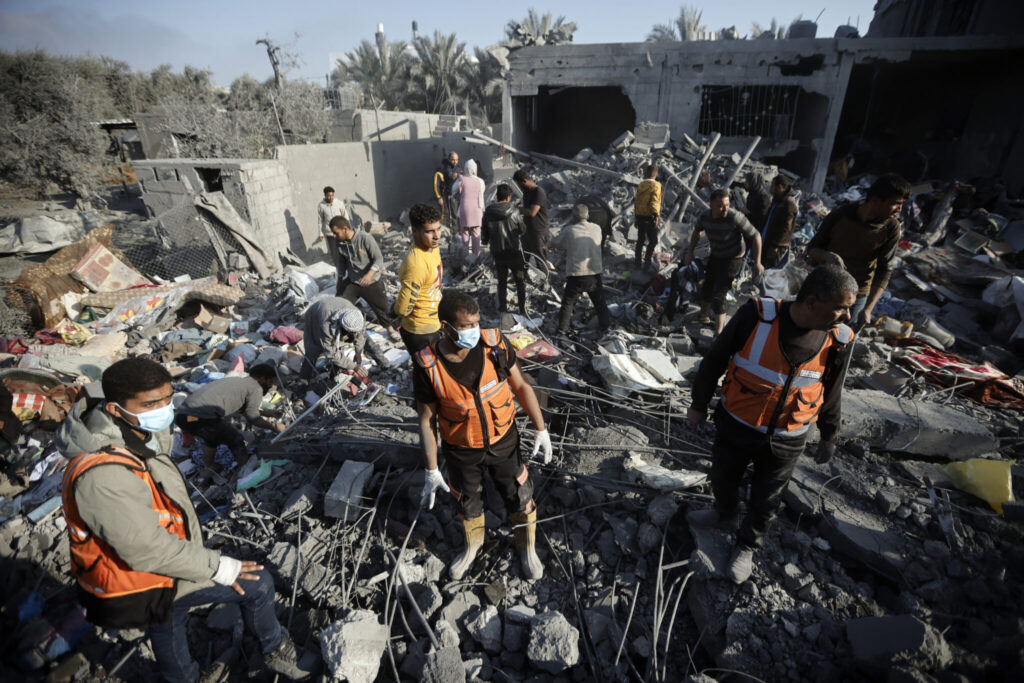
Shlomo Brom, a retired brigadier general once in charge of strategic planning in the Israeli military, said the troop changes may be a result of the U.S. pressure. He said it indicated a shift in how Israel was conducting the war in some areas.
“The war is not stopping,” said Brom. “It is the beginning of a different mode of operation.”
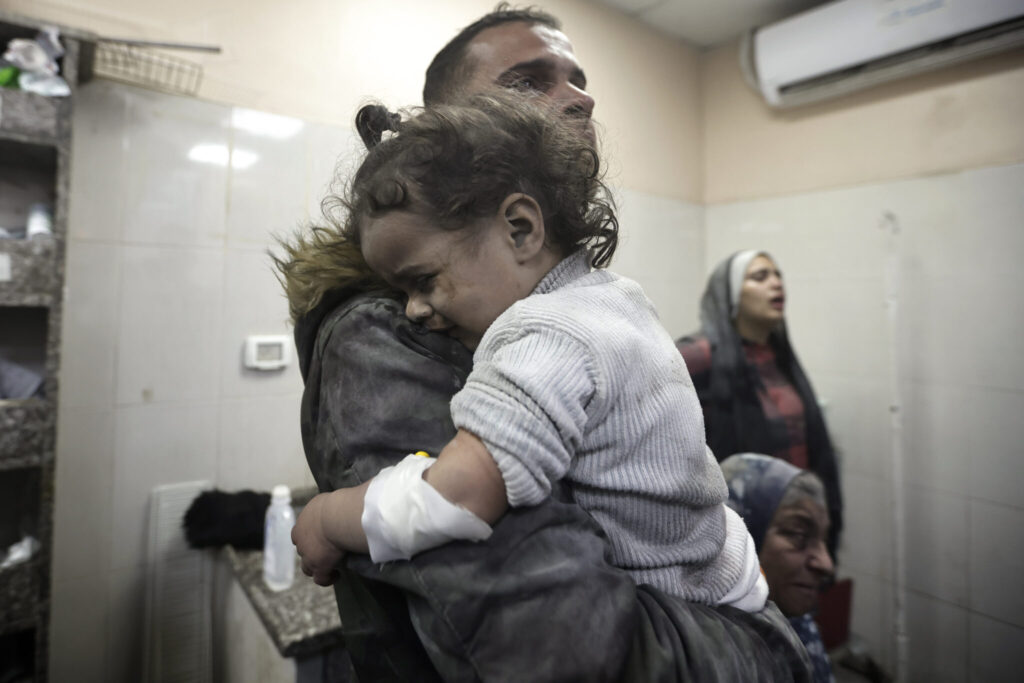
Israelis still largely support the wars aims, even as the cost in soldiers’ lives is mounting.
Over the weekend, the military said that of the soldiers killed since the ground operation began — as of Monday, 172 in total — 18 were killed by friendly fire while another 11 died by weapons or equipment malfunctions or accidents.


